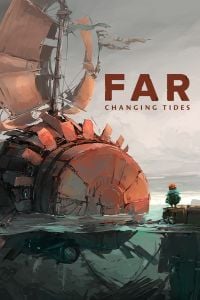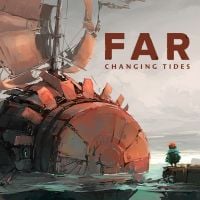FAR: Changing Tides Review - Get Swept Away
FAR: Changing Tides is an indie game about a journey through a devastated world. And while it is pretty, it could have been much better.
The review is based on the PC version. It's also relevant to PS4, XONE, Switch, PS5, XSX version(s).
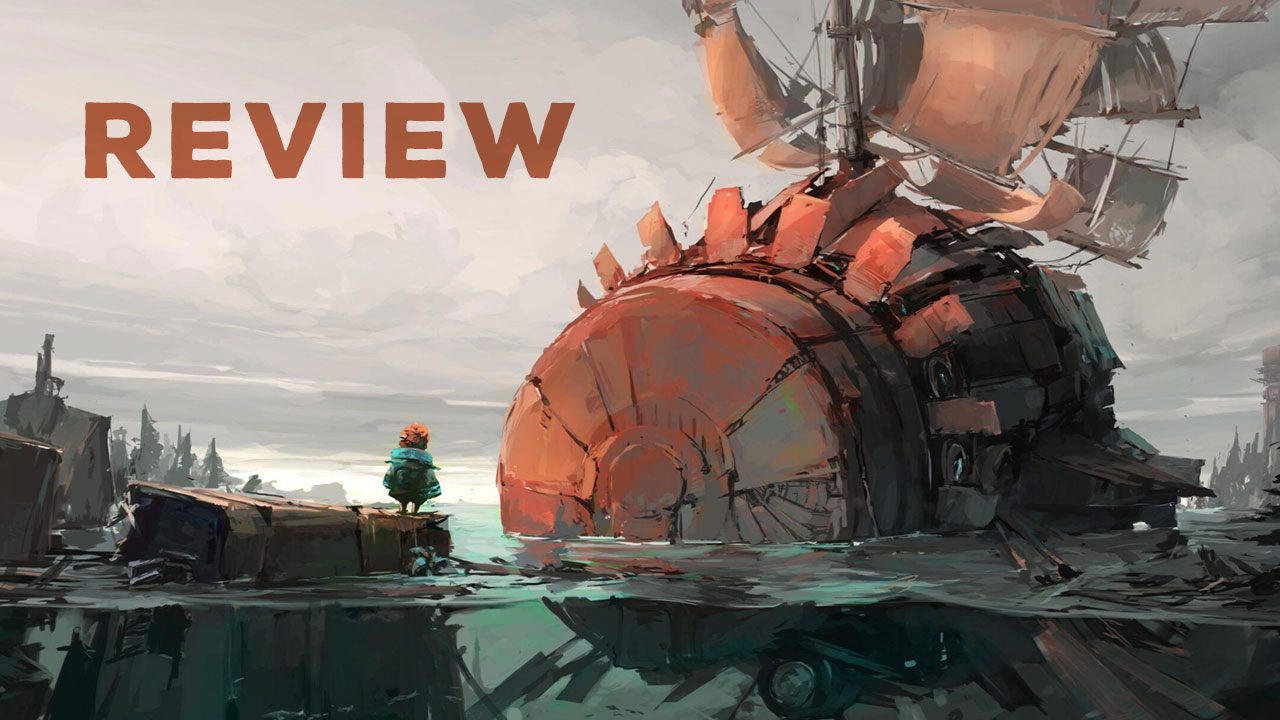
The art indie game has crystalized over the years into a more or less recognizable format. There’s a silent protagonist, platforming, and top notch art and music. FAR: Changing Tides has all of these and just a little extra up its sleeve to engage you for its eight hours of play. If anything the game could have been longer, had more features, and more story – I found myself, by the end, craving all of the above.
- Great art;
- Great music;
- Piloting the ship is fun.
- Story is too vague;
- No enemies/combat;
- Puzzles could be a bit more challenging.
But game development being what it is, the developers can’t work on it forever and the budget runs out eventually. And this is kind of a shame in FAR’s case because you can just feel the game begging to go farther and deeper; I can’t help but think there was more planned for FAR but the team didn’t have the resources to take it as far as they might have liked.
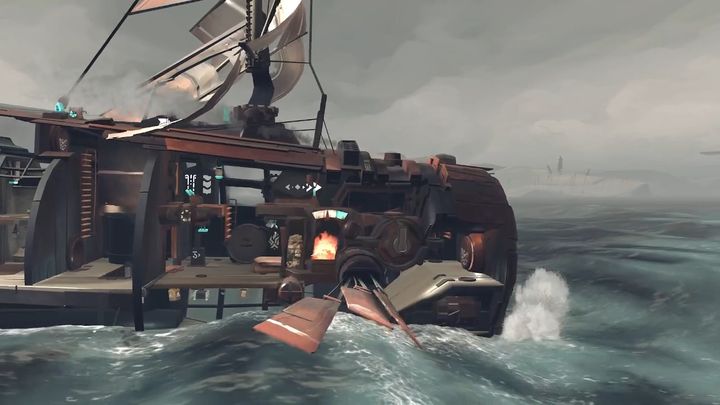
You play as a nameless, voiceless kid on a journey through a devastated world. Devastated by what? That’s left up to interpretation – whether it was a natural disaster or just your run of the mill collapse of civilization you never find out. The world is a mess though and you’ll swim through flooded buildings, clamber through abandoned power stations, and sail across an ocean for answers.
There’s not much to FAR gameplay wise – no enemies, no combat, very simple puzzles – so this technically counts as a casual game in my book. When you do finally get a ship you will need to keep it running but I never ran out of repair kits and never encountered anything that could send me to a “game over” screen.
Running the ship is the most unique thing about FAR and you’ll enjoy yourself as you learn how to pilot it. It’s nothing too complicated, you raise the sails and adjust them to catch the wind, you feed your boiler fuel to power the engines, and after a little upgrading you’ll be diving into the depths as a submarine.
It’s fun jumping around all the different parts of the ship to keep it all moving and while you never have to do anything more complicated than keep the boiler stocked and the wind in your sails, there’s a lot of charm to your humble ship and it grows to feel like a home to your seafaring wanderer.
While you could argue that there were some missed opportunities not having lethal obstacles or enemies (especially sea monsters) I’d have to guess that just wasn’t what the developers wanted you to focus on. The world of FAR is very pretty with scenic views, ocean swells, and placid sea creatures. Those of you with a fear of the ocean can relax – you’ll never encounter a shark, squid, or leviathan.
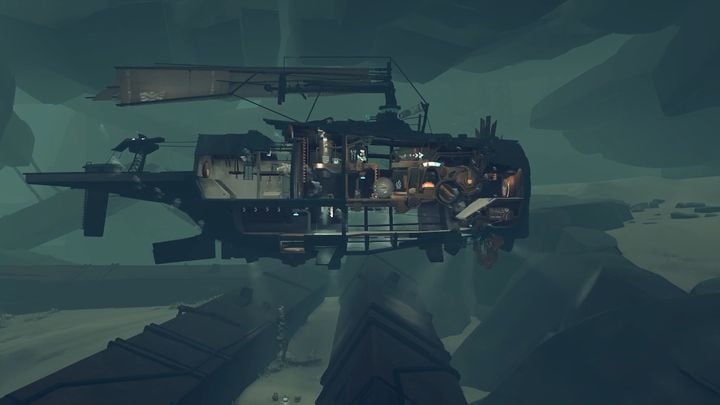
The artstyle is quasi-industrial revolution – think something like The Order: 1886 or Dishonored. Huge brass obelisks, steampunk machinery, and European architecture litter the battered world of FAR. The natural scenes too have a nice bit of variety, from tree-lined shores to glacial tundras. Beneath the waves too you’ll be treated to a visual feast as schools of fish and huge manta rays glide amongst ruined machinery and rock formations.
There are echoes of humanity but little is definite here. What storytelling there is told through murals and the buildings left behind. As near as I could tell there once was a powerful industrial civilization that was led by an upper class of enlightened scientists. Whether these scientists are the ones responsible for the fall of their civilization is unclear.
Games like Inside set the bar very, very high for side-scrolling narrative art games and I’ll give credit to FAR for trying but, ultimately, there’s more art than substance here. You’ll have a good relaxing time playing it but don’t expect a tour de force. Expect a casual cruise, not an epic voyage.
Now it’s alright to be vague – a lot of power can be drawn from that and since this is primarily a narrative experience FAR is really banking quite a bit on spinning a decent yarn. But being too vague leaves the player hungry for answers. I give the developers credit for not just boiling it down to monsters came from space and destroyed everything, but there could have been more for the player to engage with. Without just the right amount of detail you start to feel the story losing its grip on your attention.
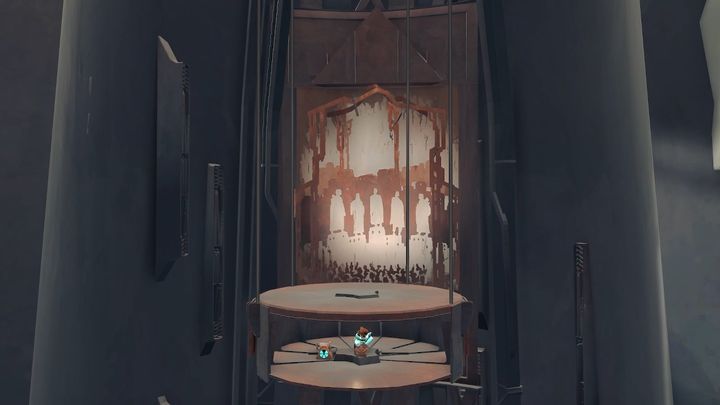
It’s like in the movie Alien, do you really need to know where the alien ship came from or how the alien eggs got there? No, those details are deliberately left vague and the story is about the crew dealing with the consequences of their discovery. And FAR is missing that at the core of its story – what is your goal as the protagonist? What is the human drama here? Survival? Finding out what destroyed the world?
The game doesn’t have a clearly defined goal and the story is mainly just going from puzzle to puzzle and sailing across an ocean… just because. It’s unclear if your character even knows they’re going the right direction.

Our reviews are featured on Metacritic.
Games like Inside set the bar very, very high for side-scrolling narrative art games and I’ll give credit to FAR for trying but, ultimately, there’s more art than substance here. You’ll have a good relaxing time playing it but don’t expect a tour de force. Expect a casual cruise, not an epic voyage.
FAR: Changing Tides
FAR: Changing Tides Review - Get Swept Away
FAR: Changing Tides is an indie game about a journey through a devastated world. And while it is pretty, it could have been much better.
